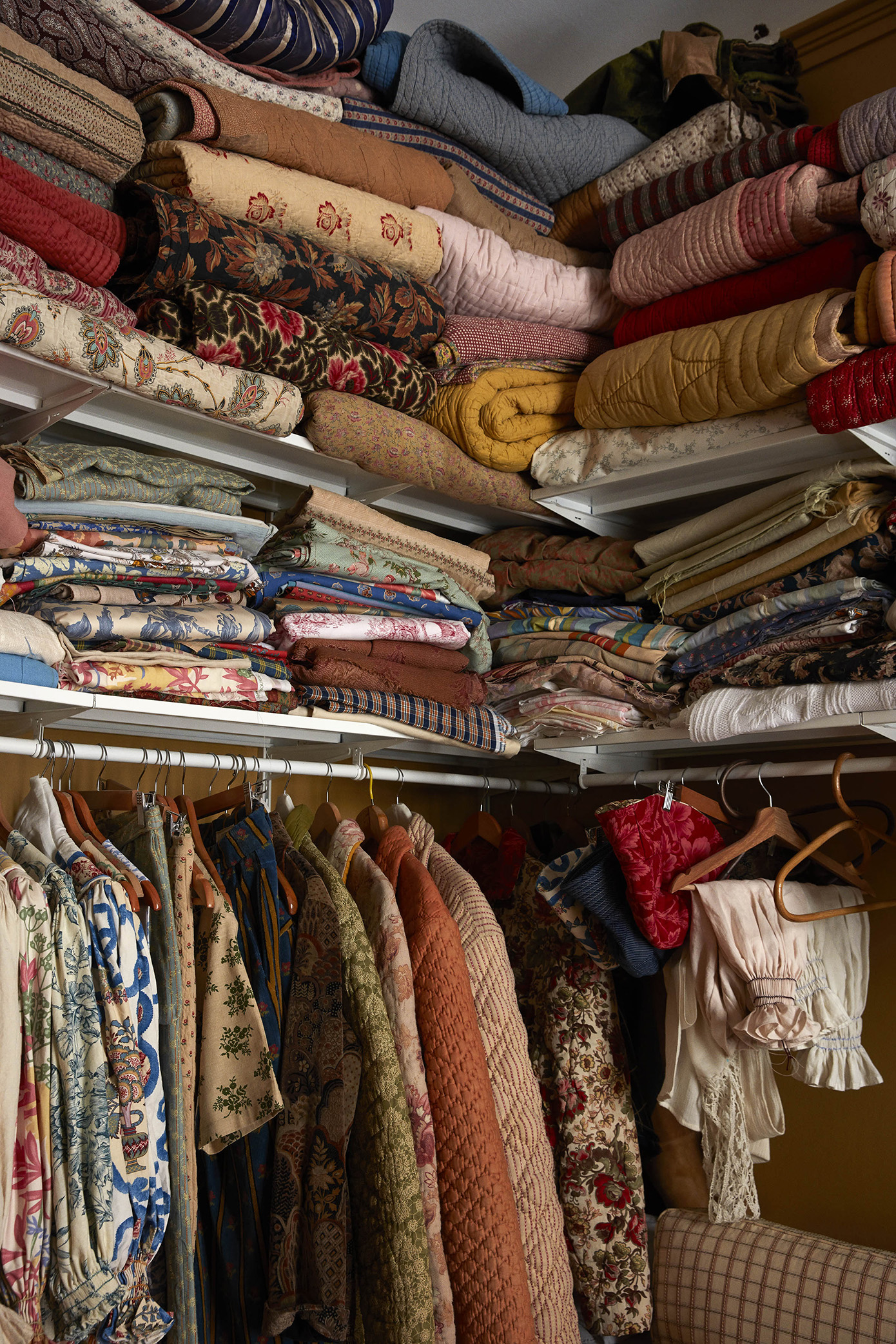
Memory of gestures
A conversation about the transmission of ancestral crafts, wool and social design with Alicia and Guillaume of memòri.
Alicia and Guillaume, the duo behind creative studio memòri, welcome me at home in Marseille. A warm and bright place, filled with their world: beautiful pieces of furniture, carefully thrifted, a rich collection of Provençal ancient fabrics (printed and quilted) and garment prototypes some in henna dyed Moroccan wool.
I want to meet them and talk about their work because we share common interests and practices: craftsmanship, wool, the beauty of gestures and the diversity of practices.
Their project’s starting point has a social dimension. It is anchored in a specific territory: the Mediterranean basin (more precisely the Anti-Atlas, Rif mountains and Provence) and is multidisciplinary, which allows them to exist in their own way in the world of social entrepreneurship, object design, textiles and clothing.
They call on the collective memory of gestures and ancestral artisanal practices with the goal to promote them and stimulate their transmission.

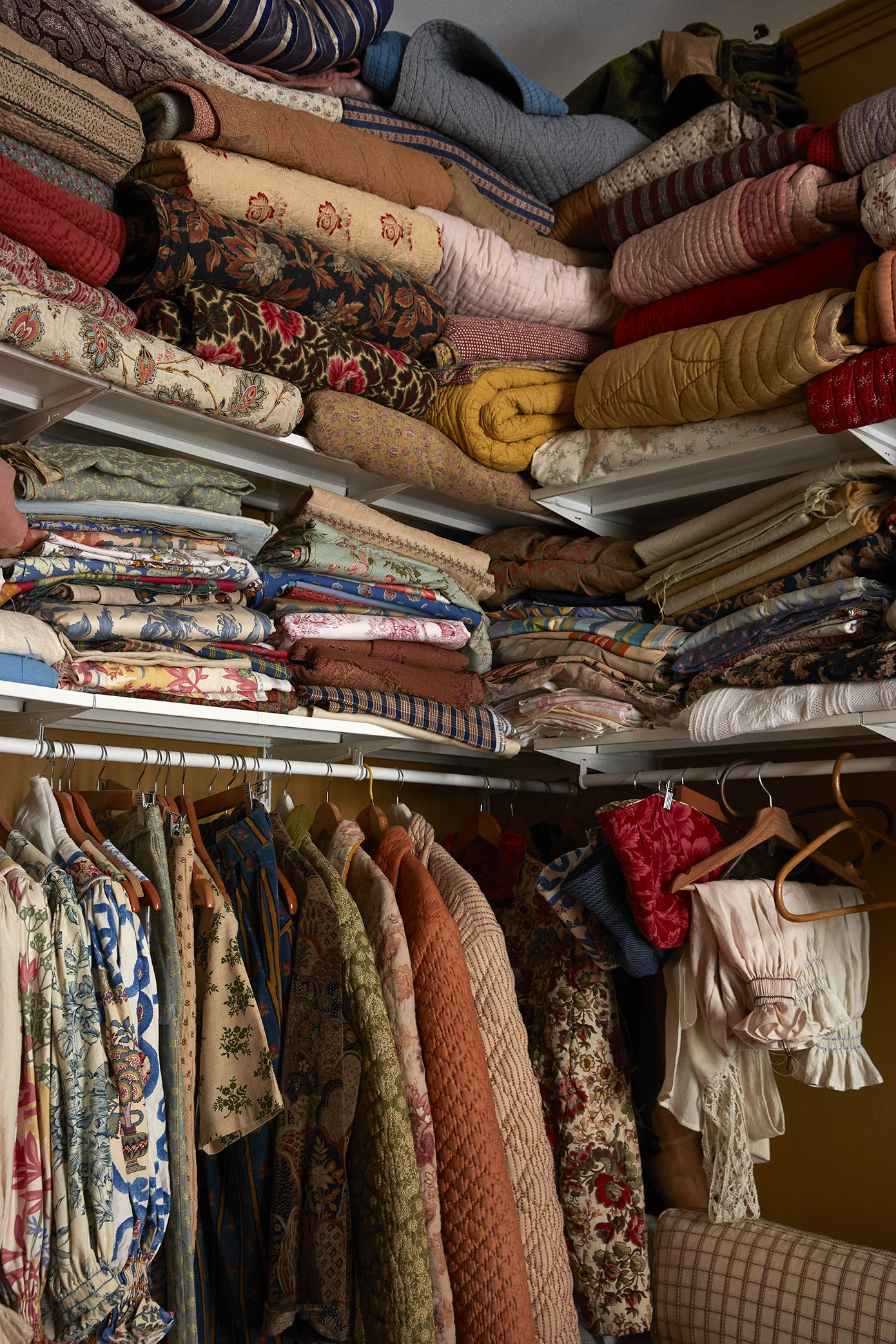
Can you talk a bit about your background?
We met in high school. After a career in business school and digital marketing, I reoriented myself towards social entrepreneurship by becoming a volunteer at Make Sense, a globally active NGO which creates networks of social entrepreneurs in many cities. Its aim is to help people set up their project by calling on collective intelligence and organizing workshops.
I always wanted to work in the cultural sector. I first took care of the cultural programming of the French Alliances in Spain, including the organization of a French-speaking film festival. But when you have a lot of energy and want to do things differently, the framework quickly becomes limited. I have always been fascinated by crafts, particularly Mexican crafts and ancestral pottery from the Moroccan Rif, discovered during our stays in these two countries.
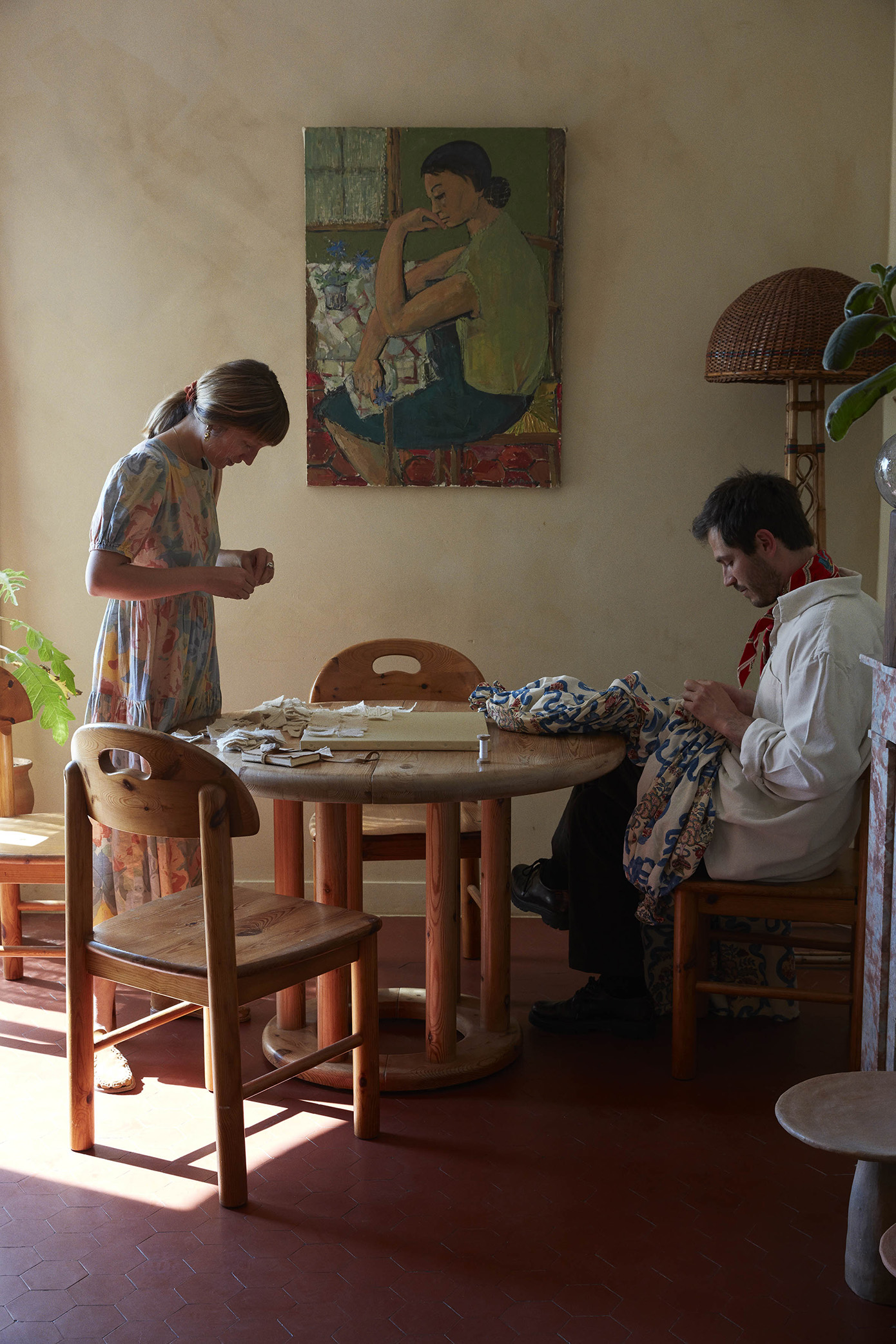
How did it all start?
memòri is the second version of a social entrepreneurship project around crafts.
We left our respective jobs to live in Morocco for two years.
We first created a project called Sumano, around the safeguarding of know-hows and the preservation of ancestral practices with the artisans with whom we still work today. Our goal was to promote traditional craftsmanship and make it known. We set up workshops in the form of immersive weeks of pottery and weaving among artisans (potters and weavers). It was very successful from the start.
We had only known the artisans for six months, when we were spotted and commissioned to do the scenography for the Dior Cruise fashion show in Marrakech in 2019. A first large-scale project with the artisans and a huge “coup de projecteur”. Creative director Maria Grazia Chiuri commissioned panels of henna-dyed wool to make a coat that opened the show and was subsequently produced to the quantity of 40 coats, one coat per boutique worldwide. It was a great start and made our year and the one of the artisans. In 2020, we separated from our partner and created memòri with a desire to go further on the creative side. Today memòri is a creative studio that revolves around the art of living, mixing artisanal pieces as well as design pieces from the 80s.
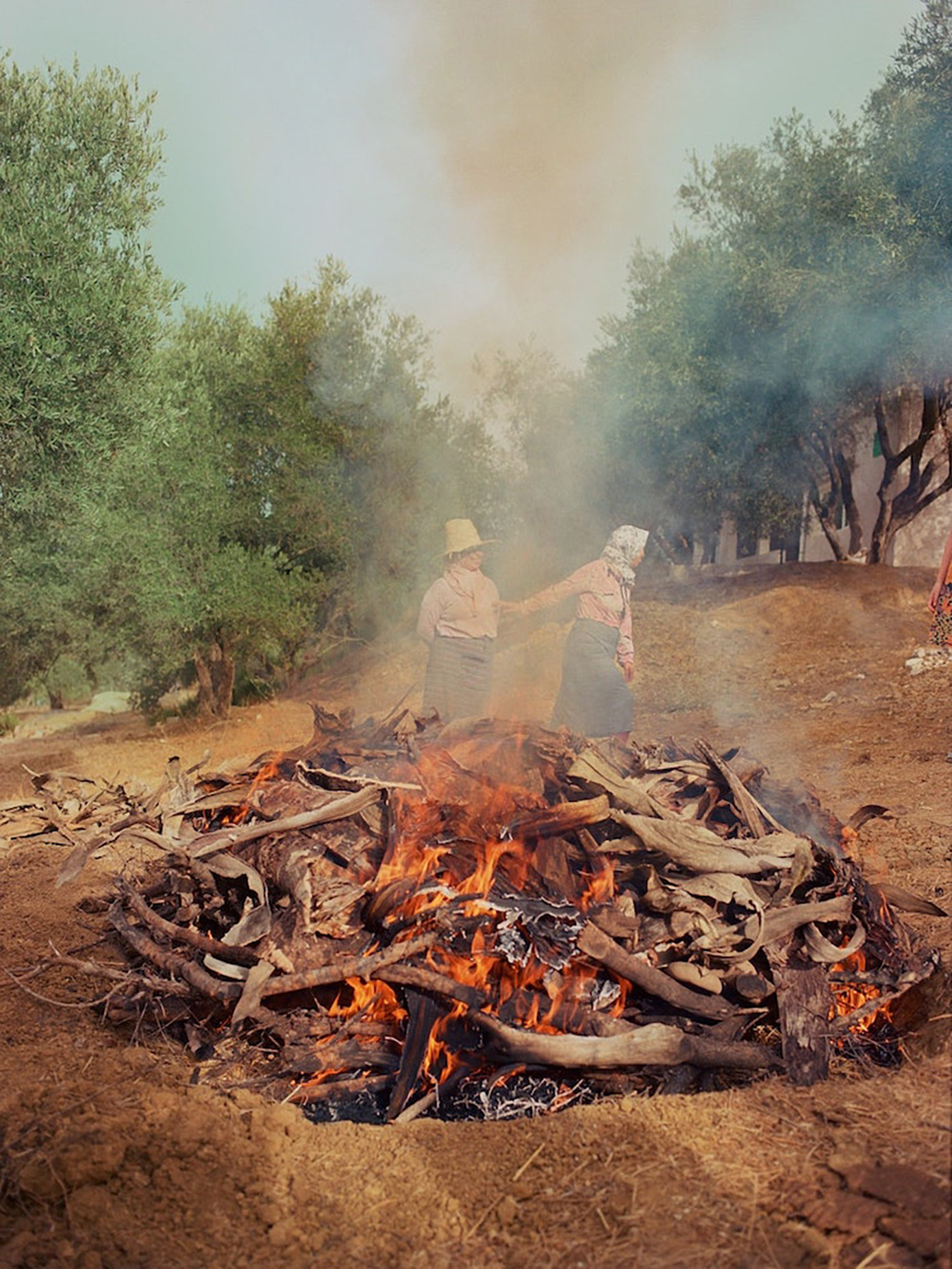
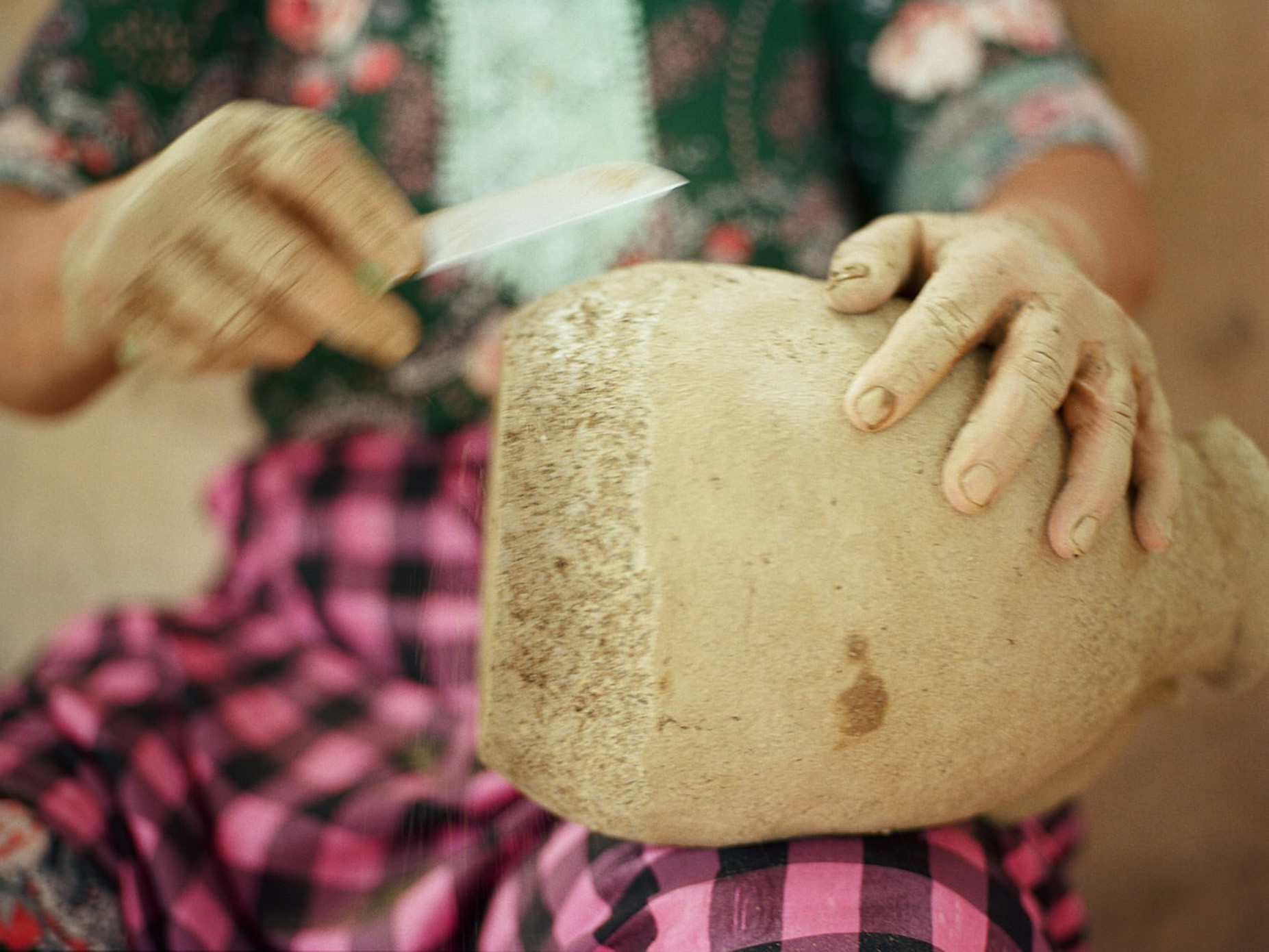

What are the immersive weeks that you organize today and how do they take place?
The immersions are organized by our non-profit association memòri lab and all funds are reinvested in local projects. The immersive pottery week takes place every year in May, in the North of Morocco, in the Rif.
We collect clay in the mountains, we learn to assemble all the pieces of the coil by hand, and cook them in an open fire. These weeks were immediately very successful among ceramists, particularly from the UK.
These weeks take place in an agroecological farm. It is a neutral place for us and the potters. The farm is a true partner that we can count on and who manages almost everything at the organizational level. We speak the same language: there is a real vocation to spread and integrate other people into the project. Young people from the region come to see what we’re doing during the week.
The goal in the next few years, is to create a pottery cooperative-school at the farm. We noticed a real demand for the ceramic wall lights that we make, particularly from decorators and architects. We work with eight potters now, but we could probably work with twice as many. Given the potential, we see an opportunity to train again young potters in the know-how of primitive pottery. Outlets could be created through us at an international level but we would also promote autonomy at the local market level so as not to create dependence.
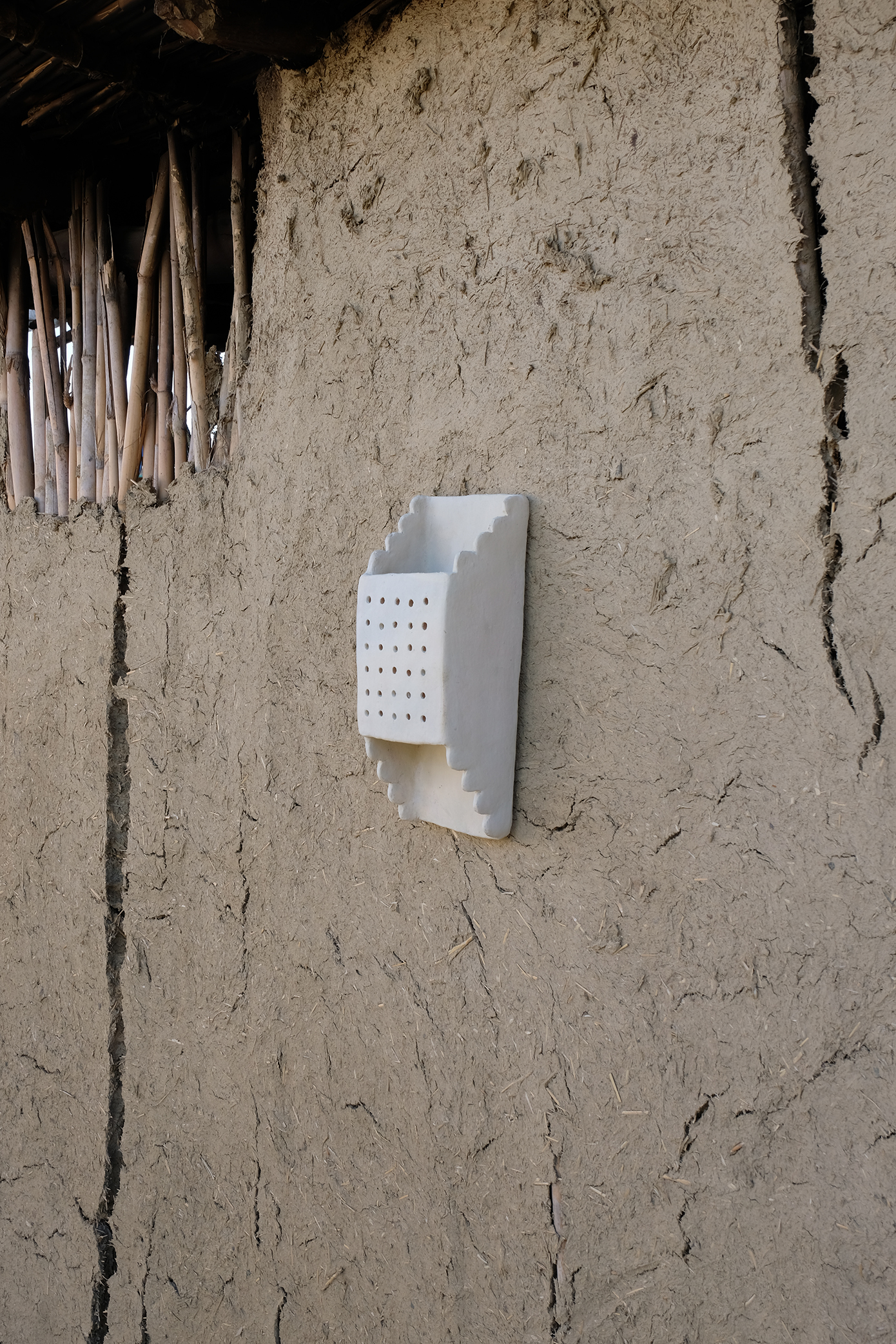
What about the weaving immersive weeks?
The weaving workshops with local wool take place once a year, in the Anti-Atlas in the South of Morocco. Until now, each immersion lasted one week and was limited to eight people. However, there is no permanent infrastructure in the village. We have to set up a lodging each time and that requires more organization. We are in discussions with the Moroccan government to create a mini-lodge in the village and set up a permanent dyeing workshop for weavers, which could also host immersive weeks.
Weaving also requires more time than pottery. These workshops will continue but we are taking a break to reimagine the format, maybe artist residencies, but in what way? We cannot imagine a form of residency where people from the city come for a month, we do a little cultural mediation, they take photos for social medias and then leave with all the know-how. It is unthinkable. Lots of projects do this and don't create any value. We don't live in Morocco, but being there every year and committed on the long run means that we can co-create value.

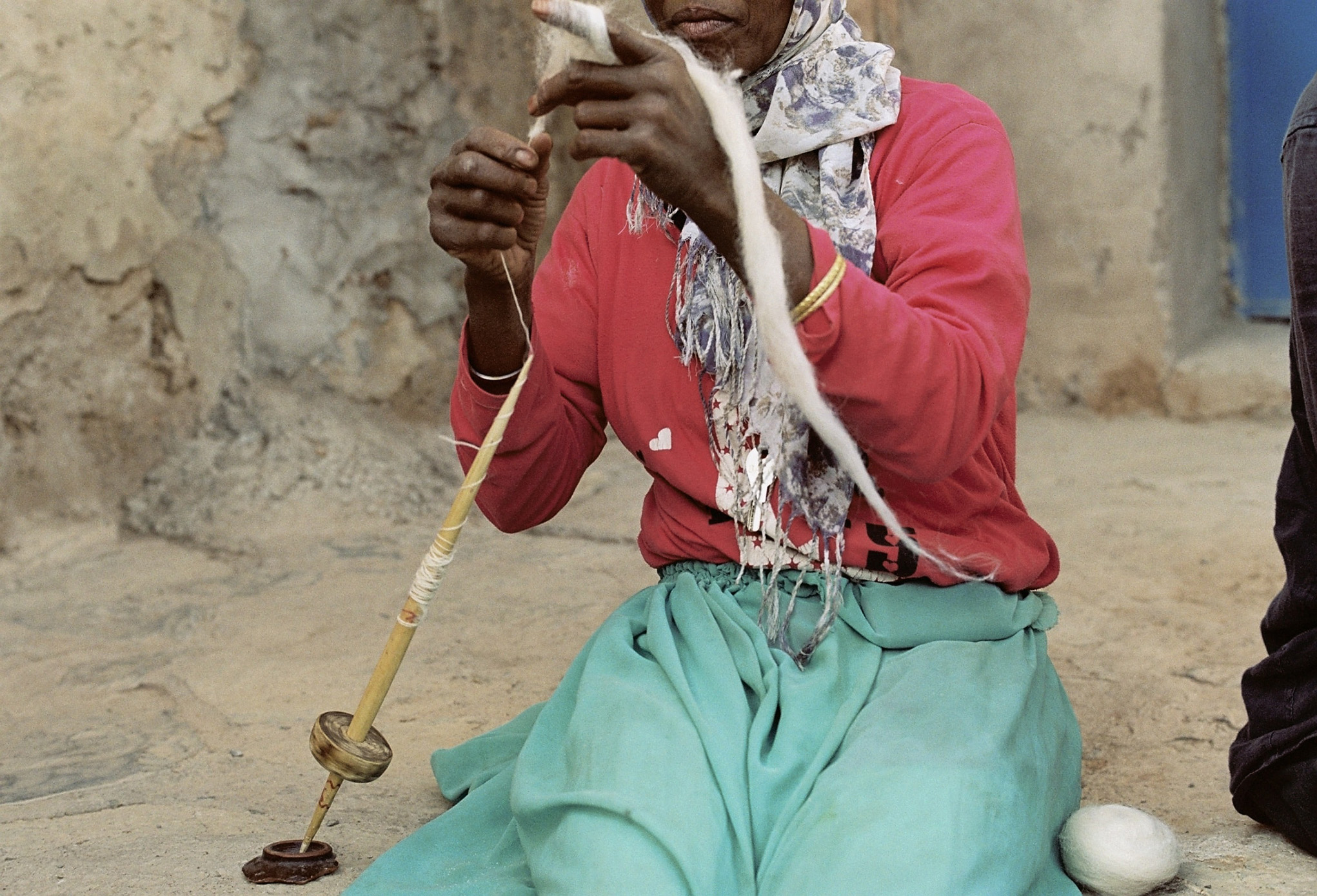
You emphasize on the social dimension as being part of ethicality and sustainability. Can you tell us more about this aspect in your project?
In the fashion industry today, sustainability has become sexy, a bit cool. On the other hand, the social side has not yet caught on. There aren't many brands that manage to embrace these two aspects.
Very often, what defines a brand as "ethical" is its commitment to a better sourcing but what does ethical mean? Is it only the use of organic cotton? We realized that social values often come last. What motivated us at the start was to imagine our set of aesthetic, ethical and social values. This is the basis of our project.
Immersive weeks are organized by memòri lab, our non-profit association. The money is reinvested into local projects to promote the ancient know-how of primitive pottery to younger generations. We co-decide how the money is reinvested with Souhad, our cultural mediator and owner of the farm in the Rif, who knows the region very well.
Last year we realized that one of the participants in the pottery week had not understood the values we wanted to share. She thought that the rooms of the agroecological farm were going to be decorated by us and was expecting to be inspired by the food, the environment. This is not at all the point of these weeks. We promote a two-way cultural exchange: it has to bring as much to the participant as it does to the potter.
This event made us want to reaffirm that our social values are just as important as the aesthetic ones and decided that the message had to be sent clearly. We have a responsibility toward these two villages which are not at all touristy. We would like to bring people who share the same values. We now we ask each willing participant to share their intentions when applying. We exchange and create a dialogue from that.
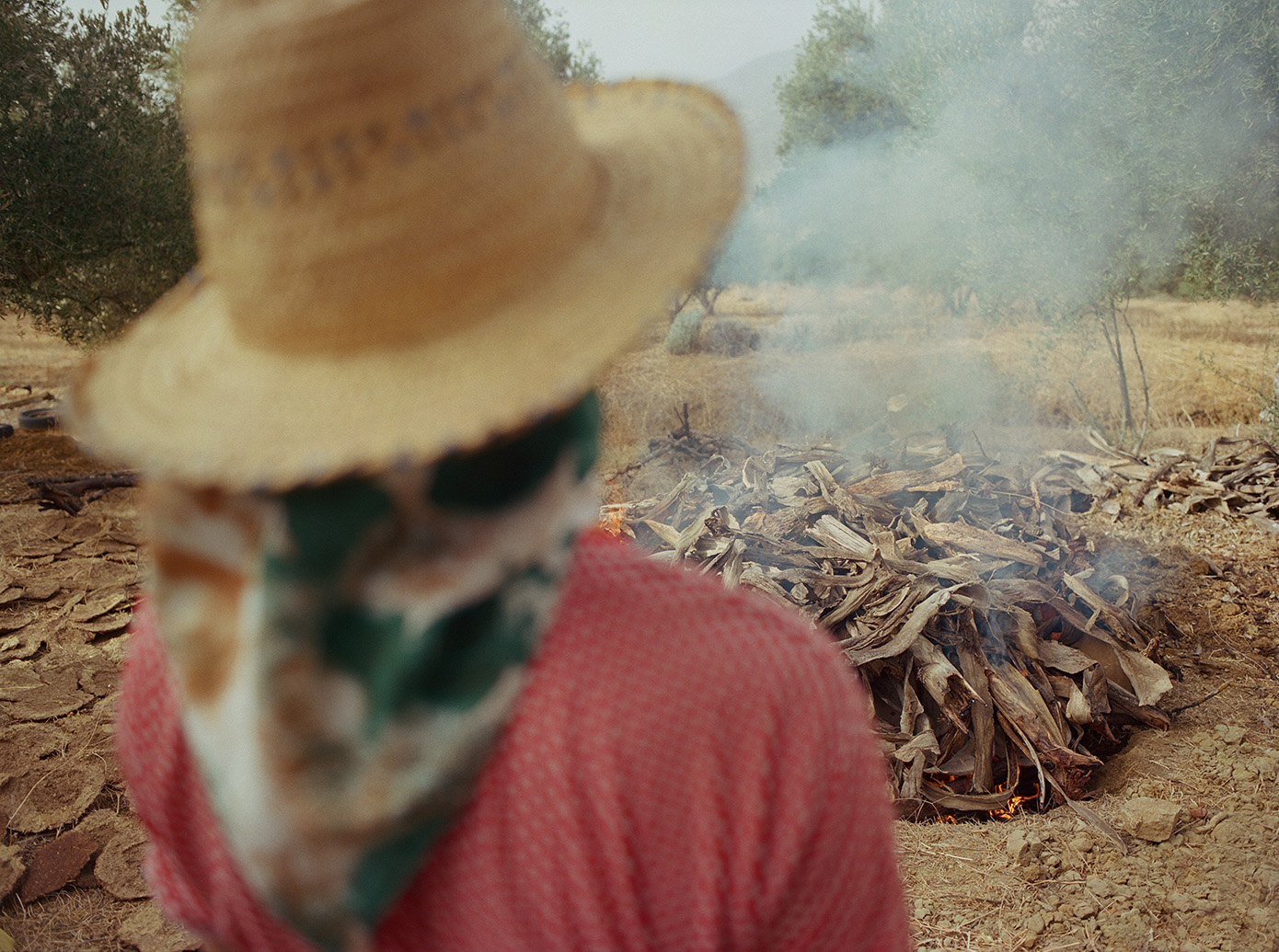
What motivated us at the start was to imagine our set of aesthetic, ethical and social values.
A whole part of your project is also dedicated to wool.
There is a whole ecosystem that revolves around wool weaving. We work hard sourcing plants, breeders and agro-ecological farms who can give us material in a local network of 100 to 200 km. This allows us to connect with people. We work with Siroua sheep breeders. Siroua is a breed which is endemic to the region but very little valued.
A sheep can be valued in three ways: through its wool, its meat or its milk. As a general rule, farmers make more money from meat. As a result, breeders crossbreed with meat breeds and the endemic one begins to decline. Crossbred sheep are no longer adapted to the territory. They overgraze the pastures and the soils erode.
Siroua sheep’s wool is super interesting and made the reputation of the carpets of «Belonging Ouagarda». But the most prestigious workshops or studios now import wool from Australia or New Zealand. For us this is total nonsense.


Situation is the same in Switzerland where there are a lot of sheep mainly raised for their meat. The wool is a by-product and a waste for farmers. It sounds crazy that this material which is local, beautiful, warm, which has everything going for it, was burned until very recently.
If it is not good wool, breeders spend more money to shear the wool than what they receive from selling it. It is a real cost for them to maintain their sheep, even in France. So it has to go quickly because it has to cost as little as possible. The shearing techniques are not always gentle and animals are often injured. This is why wool doesn't always have good press among animal defenders.
The idea is to recreate a wool industry in Morocco.
To bring value to Siroua sheep again, we created a small working group and set up a several years project with a group of breeders on good shearing practices. Last year we went to mowing sites in Morocco. Five French experts came for ten days to train them on the use of forces (scissors) or how to sort wool, not mixing breeds. We are currently looking for other partners, such as carpet brands to commit to buying x tons of kilos to breeders each year.
This Spring, we will go hiking in the Siroua mountains and follow the breeders and shepherds to understand how they live, the sheep, the breed, etc. We found funding for the experts to come back. It’s an exciting, engaging and very interesting project to work on.
We thought a lot about what we could do with this wool which is raw, artisanal, magnificent but which is rough and which makes consumers hesitate because they would prefer something ultra soft like mohair or merino. We had the idea of making lamps. You can see the light filtering inside the fibers and the weaving, it is beautiful. We try to promote the material and artisans' work as much as possible. We are working on developing curtains because the variations are very interesting in terms of spinning and weaving. There is a transparent, airy side to it and it reveals the material.
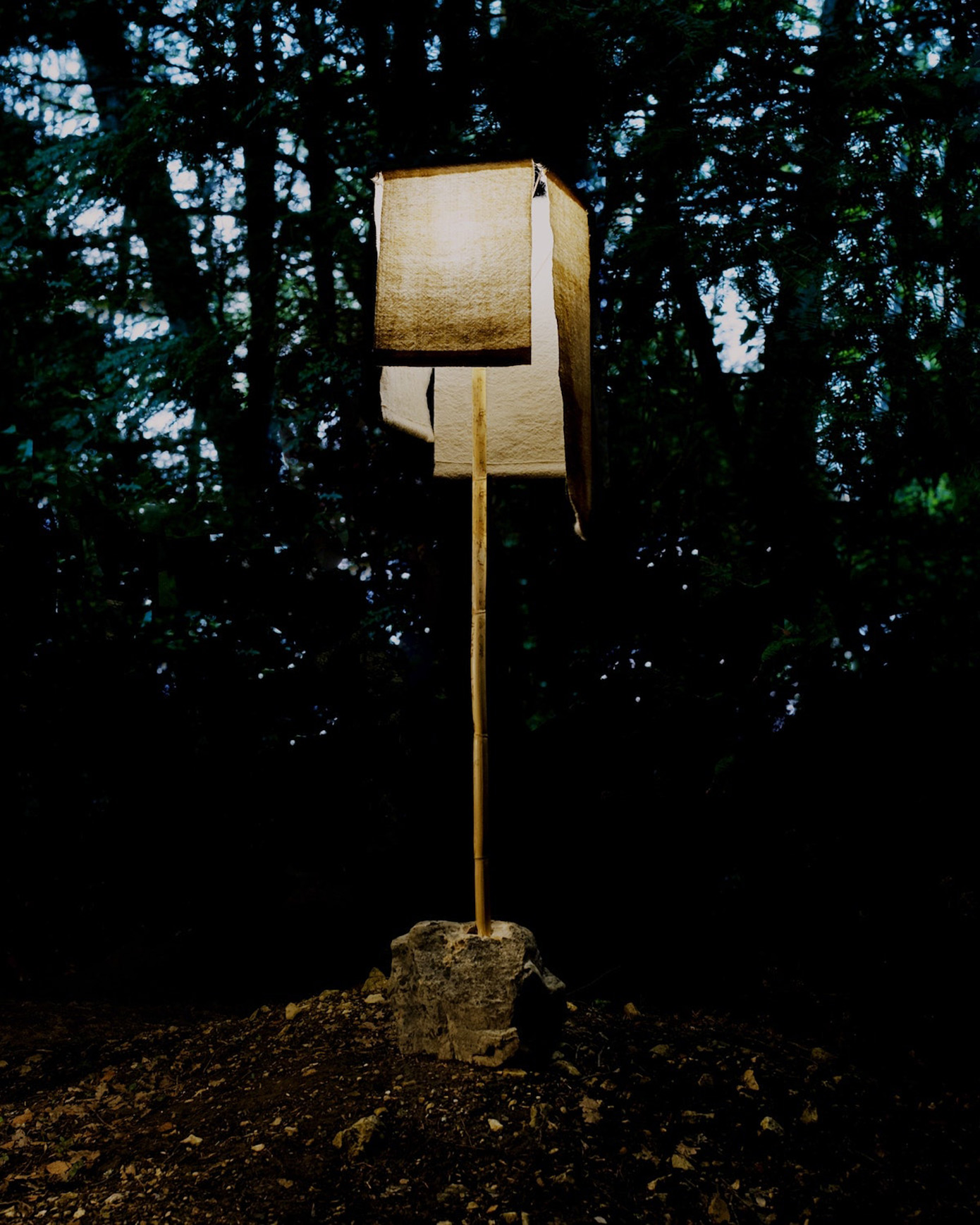
We thought a lot about what we could do with this wool which is raw, artisanal, magnificent but which is rough and which makes consumers hesitate because they would prefer something ultra soft like mohair or merino.
memòri is a very beautiful name, referring to memory and gesture. Did it stand out straight away?
We didn't want to include our names. We don't appear too much in the project, it's more about highlighting the artisans and their know-how. But we still wanted it to resonate with who we are. memòri with this accent on the "o", belongs to Provençal writing and connects us to our roots and our territory.
Your project has a very interesting and smart multidisciplinary approach. Can you explain how activities are divided between memòri studio, memòri lab and memòri gallery?
memòri lab is our non-profit association and the activities linked to it. It brings together immersive weeks, future artist residencies, the valorization of wool and the co-creation of projects decided for and by the artisans to promote their know-how to younger generations (like the idea of a school cooperative).
memòri studio includes the creation of contemporary pieces: wall lights, lighting and unique design pieces (including clothing) in small-scale edition. We promote handmade, craftsmanship and the beauty of gestures. Though it’s more complicated to find clothing production workshops in Marseille that are willing to work on unique pieces. If we continue with the garments we would like to go in a super artisanal direction. We don’t want to make it our core business.



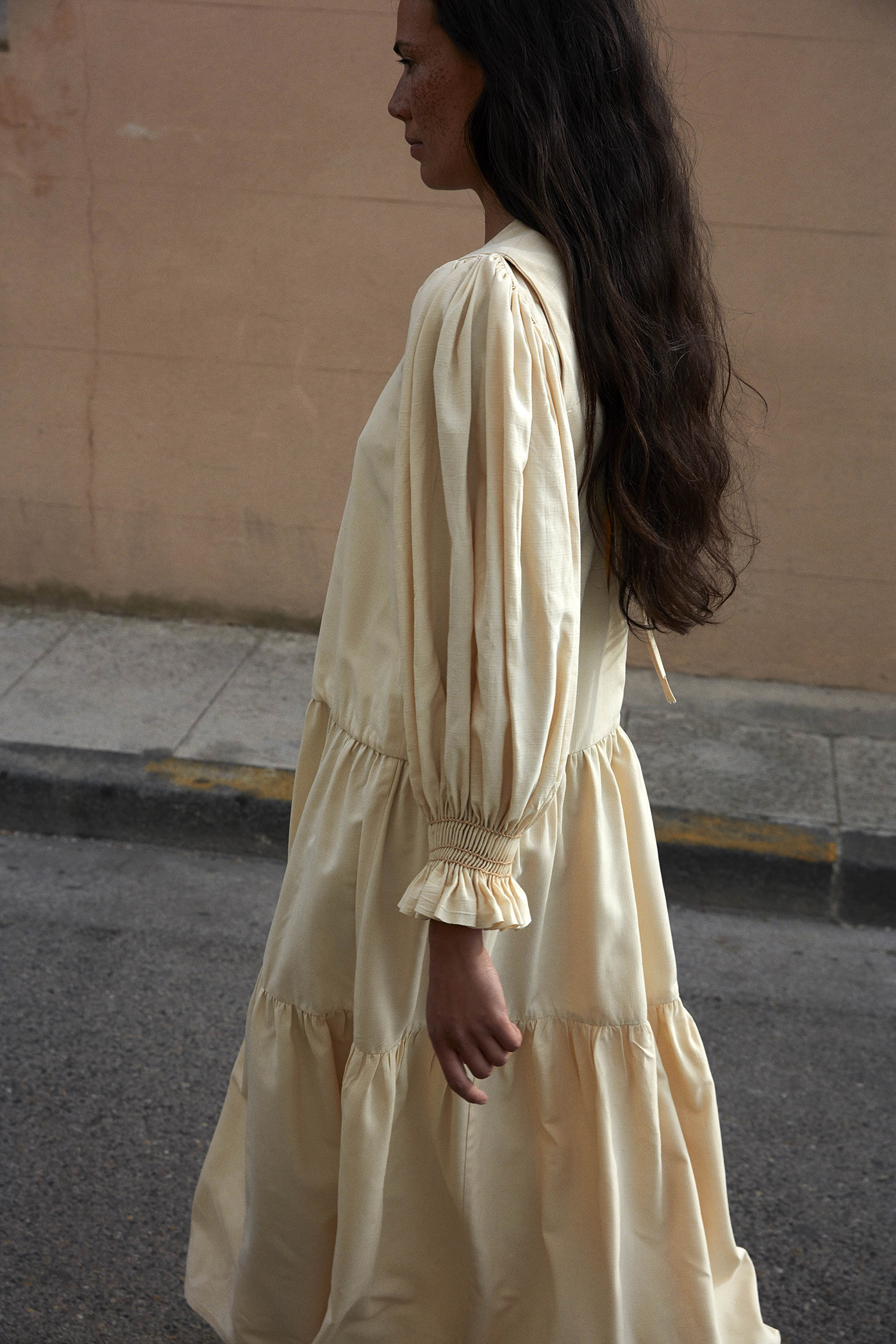
We don’t want to be put in a box and we try to love what we do every day. The project’s format offers great freedom: if one day we want to promote another know-how, we can always do so.
We quickly understood that if we wanted to remain on an artisanal scale in everything we do, we needed to diversify as much as possible and develop other activities that generate revenue. What makes us live today is memòri gallery: the purchase, then sale and rental of designer furniture for shoots or events. With memòri gallery we defend anonymous design. For example, we found a bookcase and a desk coming from Creuse, designed by a insurer who is also passionate about design. They are amazing! We learn a lot seeing all these beautiful pieces of furniture, analyzing their construction. In a near future, we would also like to promote the pieces that will be created during the residencies.
Being able to develop different practices within the studio helps us understand and touch on know-how. We have a lot of books, we have studied them but we only really understand when we practice. We don’t want to be put in a box and we try to love what we do every day. The project format offers great freedom: if one day we want to promote another know-how, we can always do so within the structure of our project and with the values we claim. That leaves a lot of doors open.
Find out more about memòri on their beautiful website, follow them @memori.lab_ and @memori.studio_ and learn more about next immersions here.
